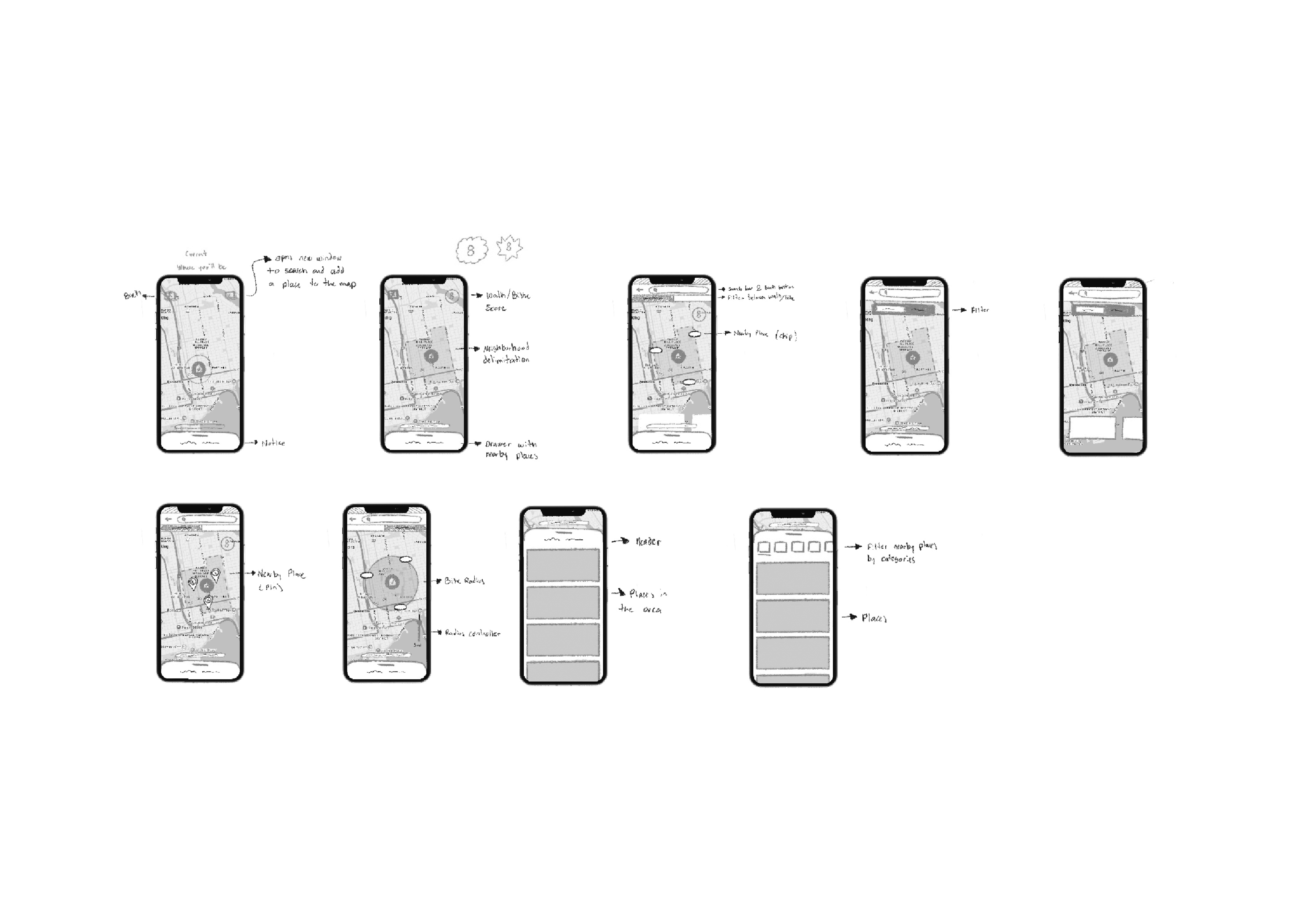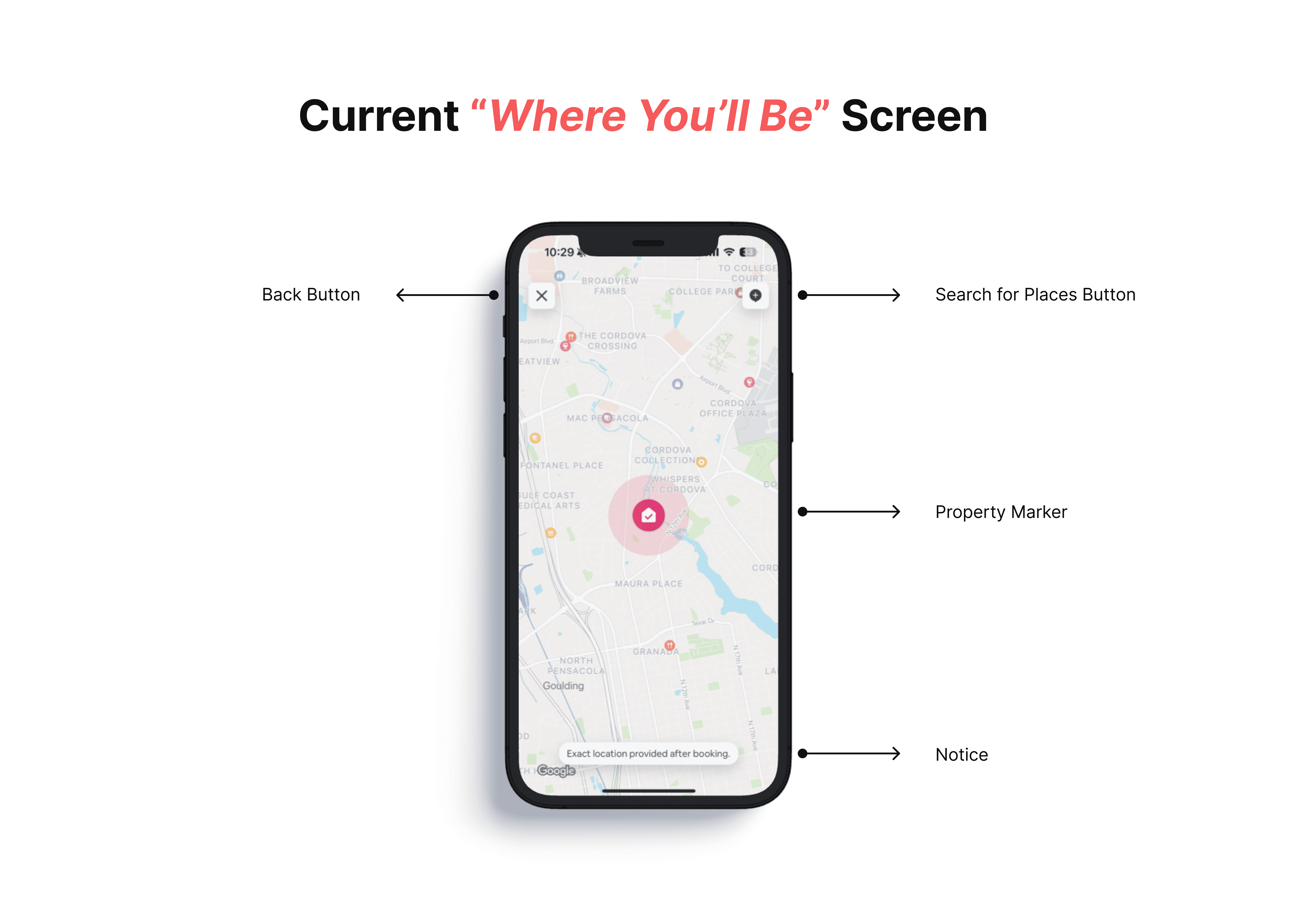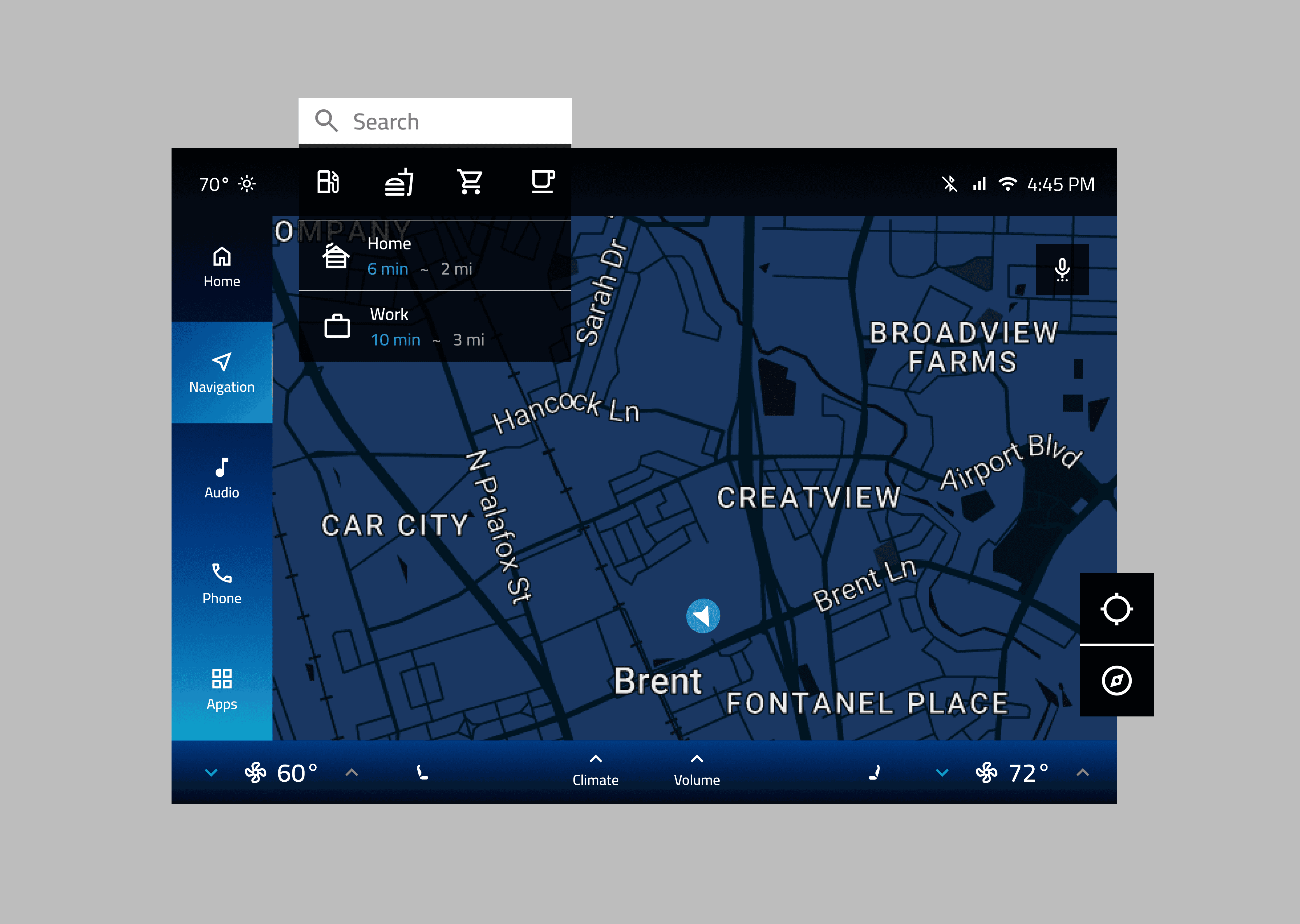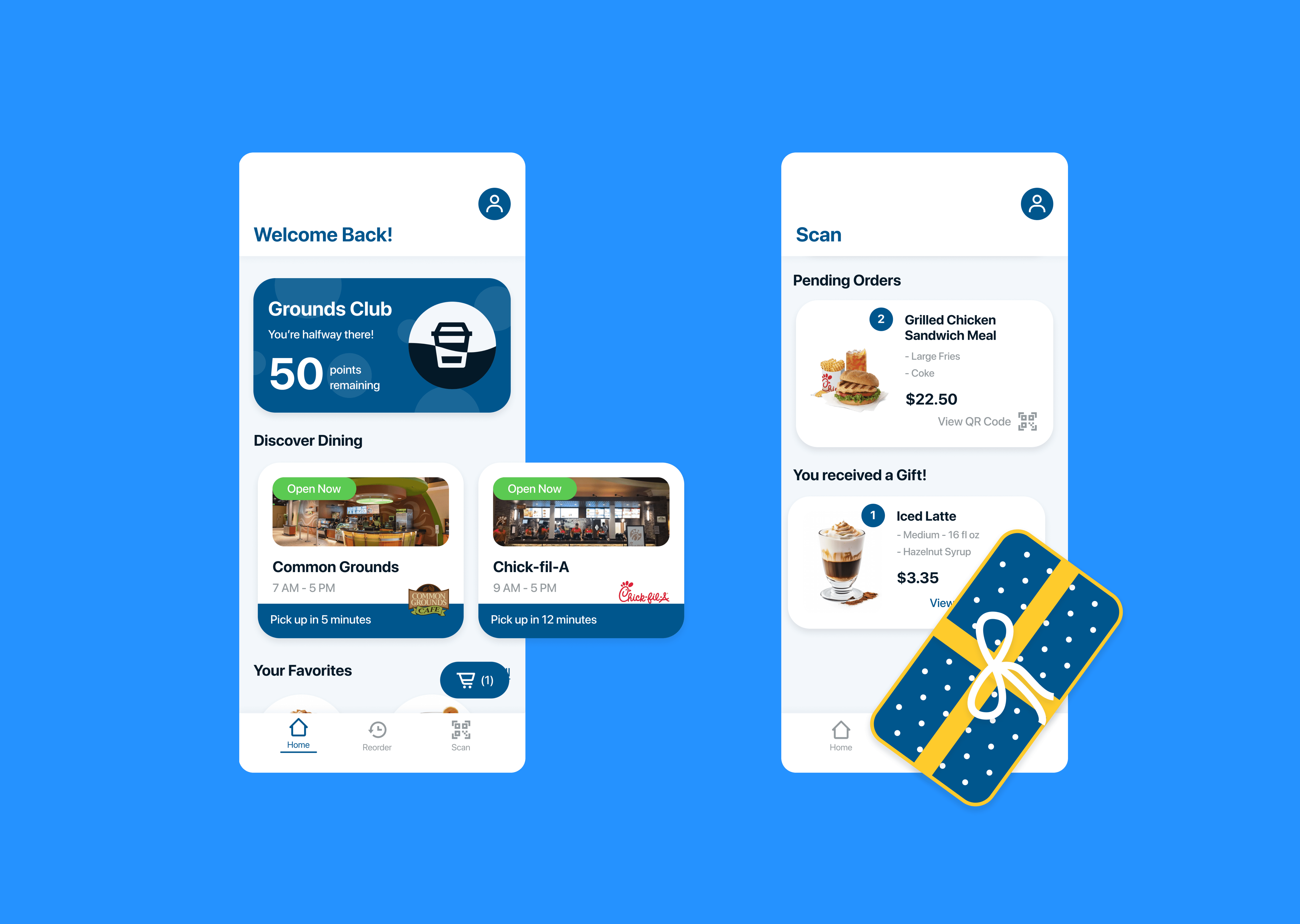Airbnb Walkability Score
Airbnb properties are often located in residential areas, with 77% of guests choosing the platform to "live like locals." This project explores integrating walkability and bike-friendliness features into Airbnb's platform, addressing both user needs for local exploration and environmental sustainability goals.
The feature aims to help travelers make informed decisions about accommodation locations while promoting active transportation options.
Tools
Figma Procreate Google Forms
Type
Case Study
Year
2024
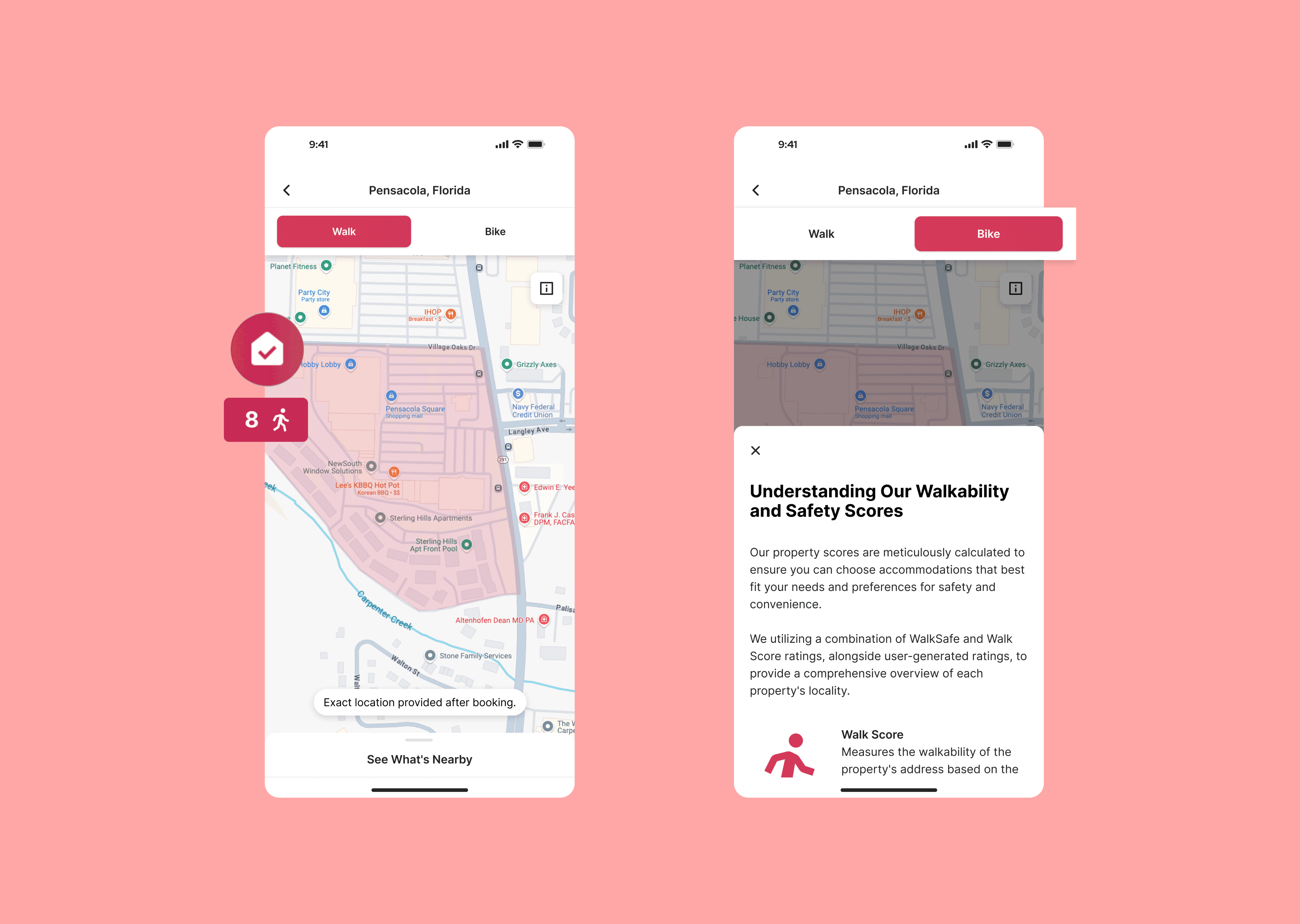
Background
Research revealed several key insights:
Survey respondents consistently prioritized location and proximity to amenities
Users wanted visual representations of walkable areas rather than text descriptions
Integration with existing maps was preferred over standalone features
Simple, glanceable metrics with the ability to dive deeper were desired
The research phase included competitive analysis, user surveys, and synthesis of existing walkability metrics from services like WalkSafe. This groundwork informed the decision to repurpose the existing "Where You'll Be" screen, maximizing familiarity while adding valuable new functionality.
Process
Brainstorming and Ideation
Initial Thoughts:
Integrate a dynamic scoring system that reflects both walkability and bike-friendliness directly on the property listings.
Ideation
Brainstormed Ideas: Considered various user interface options, including map integrations and detailed nearby amenities.
Discarded Ideas: Initially thought of including a detailed pollution score for each area, but discarded due to potential data accuracy issues and user information overload.
Retained Ideas: Chose to focus on integrating established scores like Walk Score and potentially developing a proprietary Airbnb Active Transportation Score.
Considerations
User Interface: Ensured that the new feature would seamlessly integrate into Airbnb’s existing design system using Figma. The interface needed to be intuitive, not overwhelming, maintaining focus on primary property details while offering additional value.
API Integration: Decided to use ATTOM’s Neighborhood Navigator API for detailed local data and explored integrating existing Walk Score APIs to provide reliable walkability and bike-friendliness assessments.
Prototype Development: Created prototypes in Procreate and Figma, iterating based on feedback from user testing facilitated through Google Forms.
Evaluation and Future Directions
Developer Side:
Score Calculation: Scores are calculated based on data fetched from ATTOM’s API, combined with user ratings and Walk Score data, ensuring a comprehensive evaluation of each property’s location.
Challenges: Ensuring data accuracy and real-time updates were significant challenges, requiring ongoing backend maintenance.
Comparative Analysis:
Unlike other rental platforms, this feature emphasizes a combination of user-generated ratings and established data metrics, offering a unique blend of subjective and objective insights into neighborhood quality.
Final Thoughts
This project not only allowed me to challenge my skills as a product designer but also to contribute conceptually to the evolution of property rental platforms towards more sustainable and user-friendly practices.
While this is a conceptual project, the processes and findings highlight tangible pathways for real-world application and innovation in digital platforms like Airbnb.
